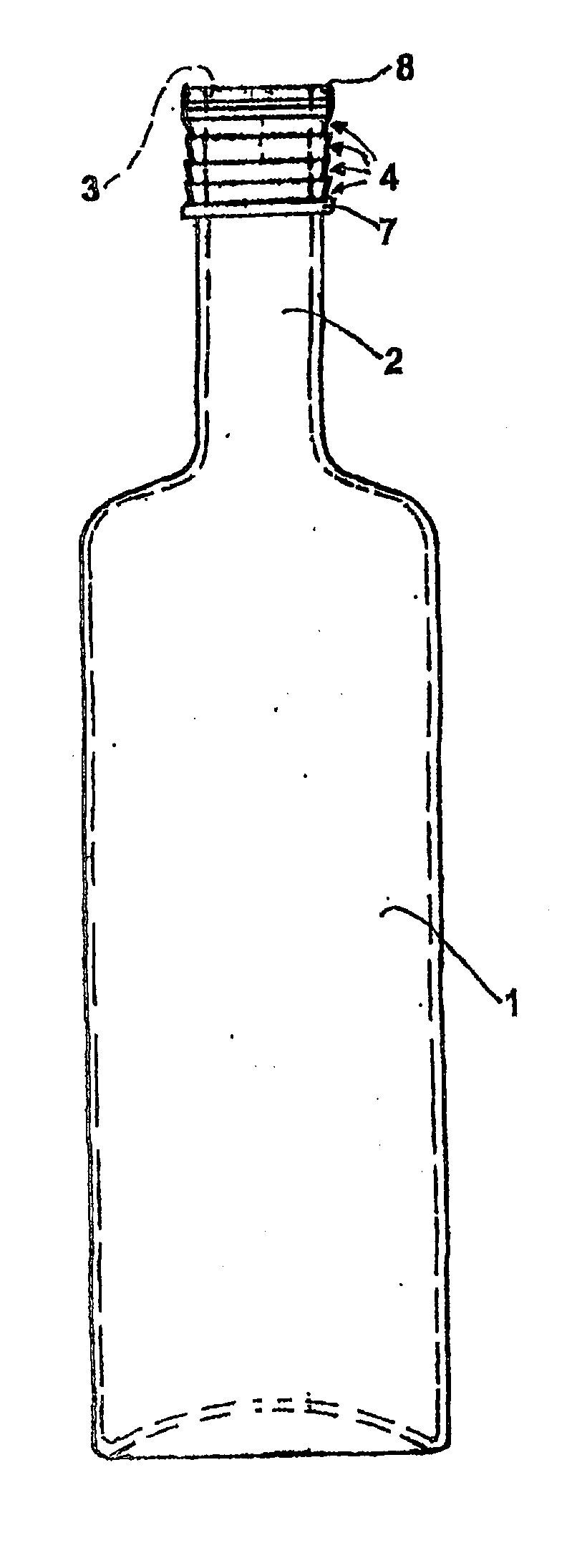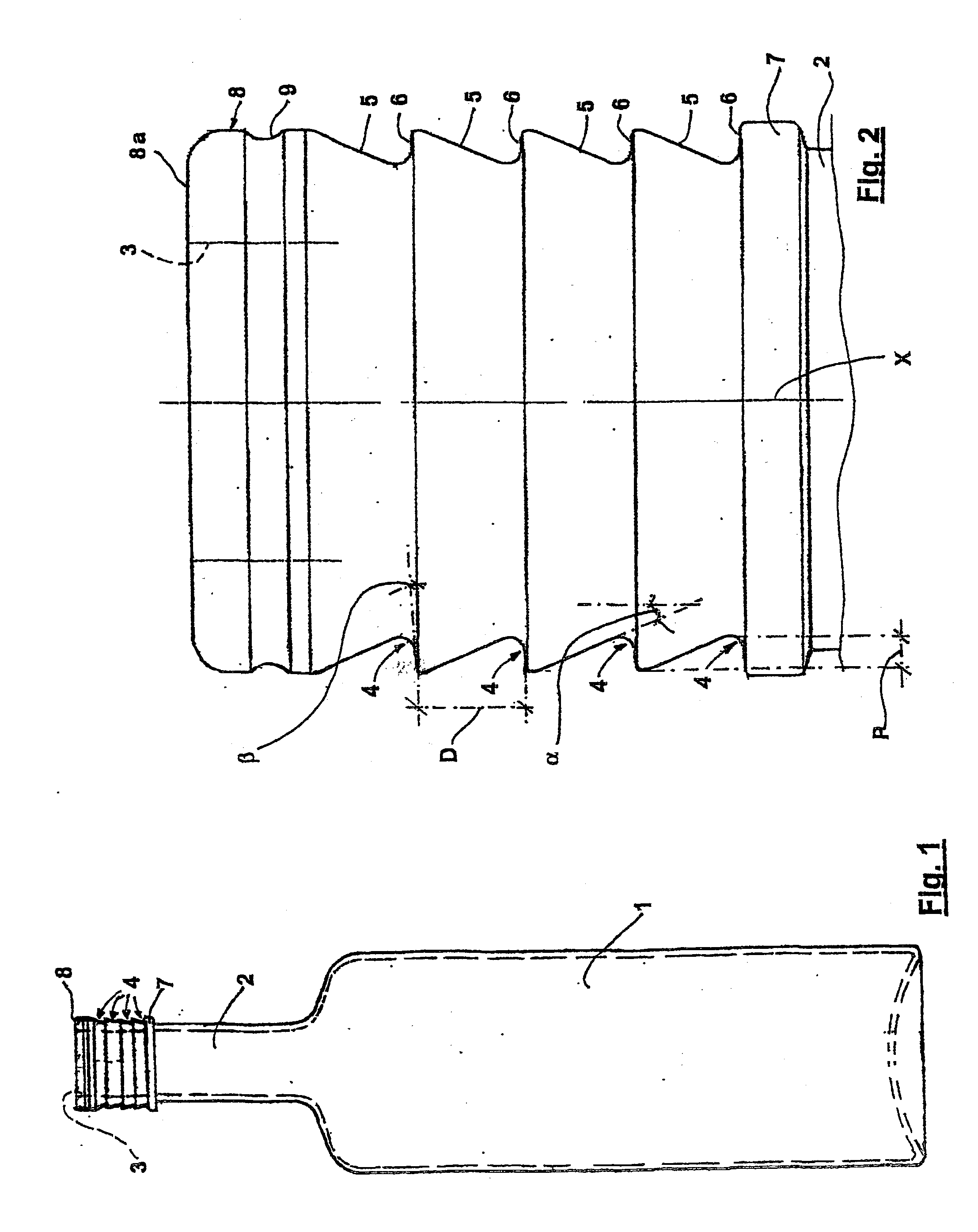Glass bottle with an antidrip neck
a glass bottle and anti-drip technology, applied in the direction of containers, container/bottle construction, rigid containers, etc., can solve the problems of wine stains that are difficult to remove, recurring residues, and particularly relevant and annoying problems
- Summary
- Abstract
- Description
- Claims
- Application Information
AI Technical Summary
Benefits of technology
Problems solved by technology
Method used
Image
Examples
Embodiment Construction
[0013] Referring to said figures, a wine bottle, made of glass, conventionally comprises a cylindrical body 1, from the upper part of which a neck 2 coaxially stands. Neck 2 is for example and typically cylindrical as well, but with a much smaller diameter. At the top end, neck 2 has a mouth 3, through which the liquid contained in the bottle flows out. According to the invention, on the outer surface of neck 2, nearby mouth 3, at least one annular groove 4 is formed, the function of which is to prevent the dripping of liquid residues after the same has been poured out from mouth 3.
[0014] More precisely, referring in particular to FIG. 2, a groove 4 is defined by a frustoconical portion 5 of said outer surface, coaxial to the central axis of the neck--indicated at X--and having a diameter which decreases downwards, and by an annulus-shaped portion 6, laying on a plane which is substantially (but preferably not exactly, as explained hereinafter) normal to axis X. The frustoconical an...
PUM
 Login to View More
Login to View More Abstract
Description
Claims
Application Information
 Login to View More
Login to View More - R&D Engineer
- R&D Manager
- IP Professional
- Industry Leading Data Capabilities
- Powerful AI technology
- Patent DNA Extraction
Browse by: Latest US Patents, China's latest patents, Technical Efficacy Thesaurus, Application Domain, Technology Topic, Popular Technical Reports.
© 2024 PatSnap. All rights reserved.Legal|Privacy policy|Modern Slavery Act Transparency Statement|Sitemap|About US| Contact US: help@patsnap.com









